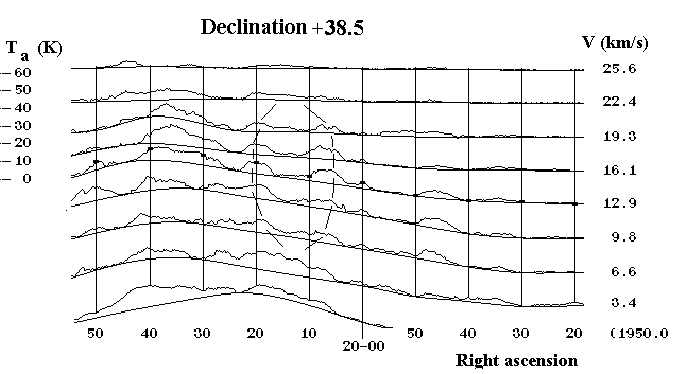|
The results of a complex program of research on the extended infrared
shell around the nebula NGC 6888 and the star WR 136 are presented.
We performed Ha observations with a Fabry-Perot
interferometer mounted at the focus of the 125-cm telescope and
radio continuum (2.7 cm to 31 cm) and 21-cm HI observations with the
RATAN-600 radio telescope.
A thick expanding shell of neutral hydrogen 120 pc in diameter
that immediately surrounds the extended infrared shell was detected.
One of sections through the shell on declination +38.5 is
represented on figure 1.

Figure 1. Curve passages in H I line through area NGC 6888.
The shaped line marks details surrounding IR-shell.
This suggests that the infrared shell is a single structure
rather than a chance projection of physically unrelated objects.
The radial velocity of the H I shell is 11+-1 km/s,
the expansion velocity is 10+-3 km/s, and the mass of the neutral
hydrogen in the shell is 104 mass of the Sun.
The bright radio features that we detected in the region
of the infrared shell all exhibit a flat spectrum typical of
thermal emission from optically thin H II regions.
The same inference is probably also true for the nebula
Simeiz 55.
Our observations are consistent with the assumption of
A.P.Marston that the extended shell was formed by the stellar
wind from the precursor of WR 136, but they do not rule out
the identification with a very old supernova remnant proposed
by J.Nichols-Bohlin and R.A.Fesen either.
A revision of the distance to the pulsar PSR J2013+3845
with inhomogeneity of the interstellar medium taken into
account allows for its formation during the same supernova
explosion some 4 x 105 years ago.
|
